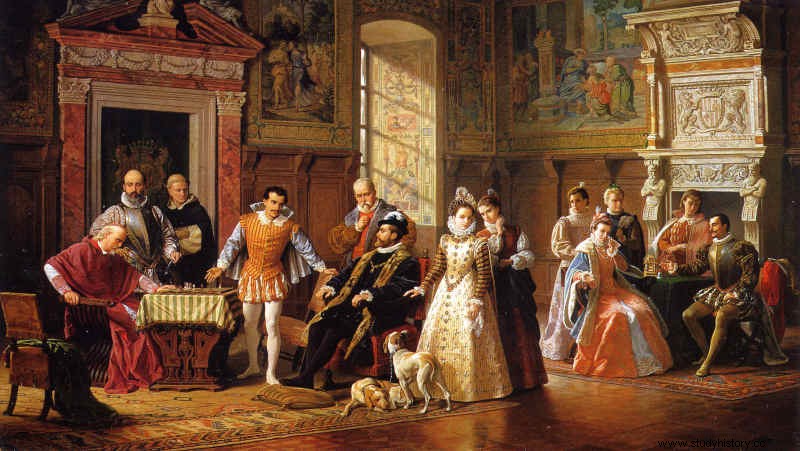Had the delinquent file existed in the times of Felipe II, the one with which telecommunications companies threaten you for non-payment of one euro, whether it is legal or illegal debt, the name of the Spanish king would have appeared in first place since 1557, the year in which he declared the suspension of payments. And it would not be the only occasion, during his reign he repeated it again in 1576 and in 1596. So, it would seem logical to think that Felipe II was a spendthrift or that he lived beyond his means. So, knowing that the monarch did not shake his hand when it came to declaring bankruptcy, why did the bankers continue to lend him money? Well, because Felipe II's failure to pay the debt reflected liquidity problems, not solvency.

Given the diversity of its sources of income, the solvency of the Royal Treasury did not admit discussion, but it suffered liquidity difficulties when, for example, Indian remittances were delayed or when the king sensed any sign of Protestantism, wherever it was, and sent their armies, and, logically, this required having a good cushion of cash to cover all these extraordinary expenses. So, Felipe II undertook a tax reform that allowed him to increase income and even in 1589 he called the Cortes de Castilla to collect a new one, the Millions. It was an extraordinary tax that was collected for a specific purpose and that a commission, created for that purpose, had to administer and supervise that it be spent with the objective that was requested. The other option that remained to obtain funds was to borrow on the income of future years, that is, to resort to the issuance of public debt, the seats and the jurors (the financial instruments of the time).
The seat is a financial operation in which the bankers (the German Fuggers with Carlos I and the Genoese with Felipe II, mainly) delivered an amount of money in a specific place and currency, and the king promised to return the principal and the interest (normally 12%, although it could be higher depending on the urgency and other conditions) in a short period of time and in the stipulated place and currency. A specific case of this type of operation was the payment to the displaced Tercios. The king needed money now, but he didn't need it at his court, he needed it in Flanders, so it was agreed that the Genoese would take him there to pay the soldiers. This was the financial instrument to borrow in the short term, normally monopolized by international bankers, but it was also done in the long term by issuing juros, which were bought by both foreign and Spanish investors. The juro is a right, individual or collective, to receive a periodic income from the Royal Treasury (mercy or privilege) as compensation for a service rendered to the monarch, expropriation or, for the matter at hand, for the delivery of a certain amount in cash to the sovereign. These vows could be for life , perpetual (and therefore inheritable) and on removing , in which that right was recovered through the return of the capital delivered to the king plus the interest set for this assumption. This financial instrument was also used as a guarantee for the return of the seats.

Even so, due to various specific circumstances, when the time came for the return of the seats or the payment of the promised rents, via juros, there were times when the Royal Treasury had no liquidity and the bankers turned off the tap, and Felipe II did not he was left with no choice but to declare bankruptcy and suspend payments. Logically, this situation was significant and had very negative consequences (for example, the riots of the Tercios), in addition to questioning the credibility of the supposed robustness of the Royal Treasury. And here the character of the Prudent King came into play. . Without tearing their clothes and knowing the endorsement of the Indian shipments, the bankers had no choice but to sit down to negotiate, and achieved a significant reduction in debt (remove) and convert short-term obligations (return of seats) into long-term debt (juros). In addition, the king had an ace up his sleeve, because he knew that, at the same time, the international creditors had set up a financial stall of juros sale and purchase that, if it collapsed, would shake the finances of half of Europe. So, we become such friends again and turn on the faucet. And do not suffer for the bankers who, despite all the bankruptcies, made money (and a lot) by lending to the king.
And further proof that Felipe II made money even from under the stones was the sale of 150 hidalguías at 5,000 gold ducats each. His grandson, Felipe IV, continued with the sale of noble titles, but had to lower the price to 4,000 ducats, payable even in installments. During the 17th century, 5 viscounties, 128 counties and 269 marquisates were created. So, given that today many rich people, especially those whose money has come from heaven, have airs of grandeur, surely it would be easier to place a few marquisates or counties than to place public debt
